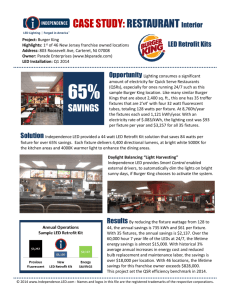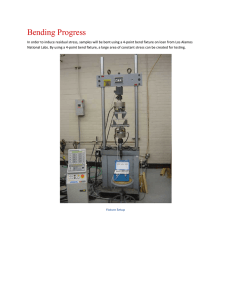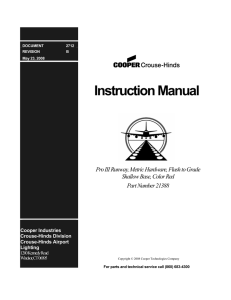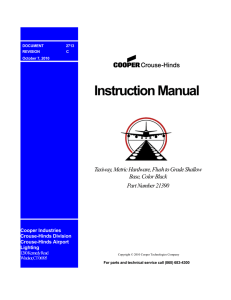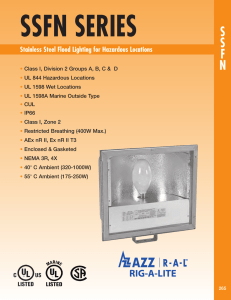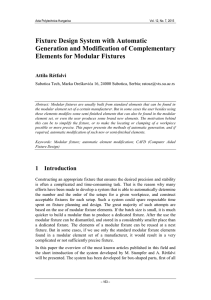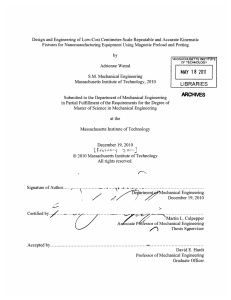Fixture and fittings
advertisement
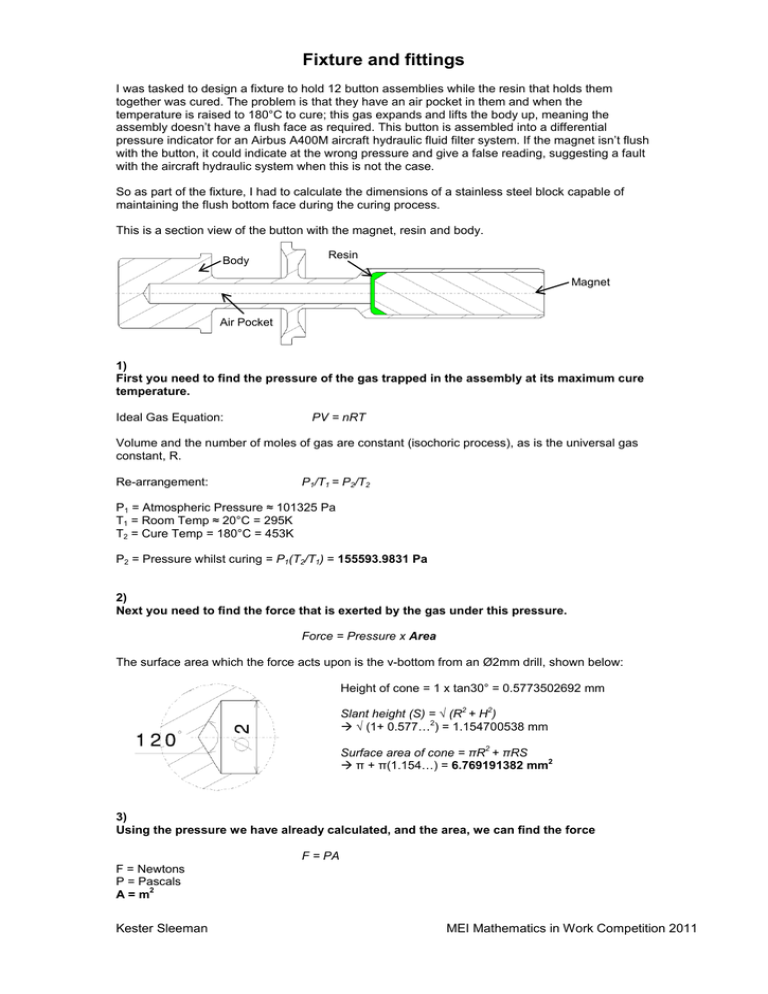
Fixture and fittings I was tasked to design a fixture to hold 12 button assemblies while the resin that holds them together was cured. The problem is that they have an air pocket in them and when the temperature is raised to 180°C to cure; this gas expands and lifts the body up, meaning the assembly doesn’t have a flush face as required. This button is assembled into a differential pressure indicator for an Airbus A400M aircraft hydraulic fluid filter system. If the magnet isn’t flush with the button, it could indicate at the wrong pressure and give a false reading, suggesting a fault with the aircraft hydraulic system when this is not the case. So as part of the fixture, I had to calculate the dimensions of a stainless steel block capable of maintaining the flush bottom face during the curing process. This is a section view of the button with the magnet, resin and body. Body Resin Magnet Air Pocket 1) First you need to find the pressure of the gas trapped in the assembly at its maximum cure temperature. Ideal Gas Equation: PV = nRT Volume and the number of moles of gas are constant (isochoric process), as is the universal gas constant, R. Re-arrangement: P1/T1 = P2/T2 P1 = Atmospheric Pressure ≈ 101325 Pa T1 = Room Temp ≈ 20°C = 295K T2 = Cure Temp = 180°C = 453K P2 = Pressure whilst curing = P1(T2/T1) = 155593.9831 Pa 2) Next you need to find the force that is exerted by the gas under this pressure. Force = Pressure x Area The surface area which the force acts upon is the v-bottom from an Ø2mm drill, shown below: Height of cone = 1 x tan30° = 0.5773502692 mm Slant height (S) = √ (R2 + H2) √ (1+ 0.577…2) = 1.154700538 mm Surface area of cone = πR2 + πRS π + π(1.154…) = 6.769191382 mm2 3) Using the pressure we have already calculated, and the area, we can find the force F = PA F = Newtons P = Pascals A = m2 Kester Sleeman MEI Mathematics in Work Competition 2011 Our area needs to be converted from mm2 to m2. As there are 1000mm in one metre the conversion is to divide by 10002 6.768641307 ÷ 1x106 = 6.769191382x10-6 m2 So our force is 6.768641307x10-6 x 155593.9831 = 1.05324545 N Except that this force is acting at 30° from vertical, and we only require the vertical component of the force as this is the force lifting the body. 1.053…N ? 60° So the vertical component is: 1.053… x sin60° = 0.9121373157 N 4) The fixture holds 12 button assemblies, so you need to multiply this figure by 12 to get the total force. 0.912… x 12 = 10.94564779 N 5) This must be converted from a force in Newtons to a mass in kilograms. Mass = Force ÷ Acceleration (due to gravity) 10.94… ÷ 9.81 = 1.115764301 kg So this means that to keep the buttons down you need a minimum of 1.12 kg 6) What would the dimensions of a stainless steel block of this mass be? The fixture for holding the buttons measures 44x59x22mm (length x width x depth), so ideally the ballast would have the same footprint. Typically, stainless steel has a density of approximately 8000kgm-3 so we can work out the depth required to create a block of 1.12kg. The total volume of material required would be: 1.12 ÷ 8000 = 1.4x10-4m3 = 140000 mm3 We already know 2 dimensions, so we can work out the depth. 140000 ÷ 44 ÷ 59 = 53.92912173 mm So the block would have to be 44x59x54 mm to ensure the bodies would not lift. Kester Sleeman MEI Mathematics in Work Competition 2011


